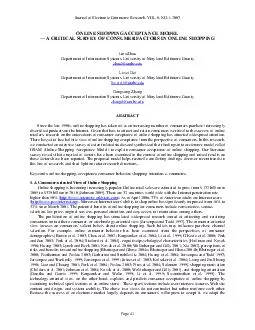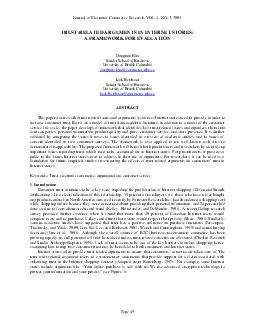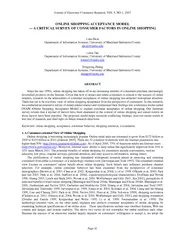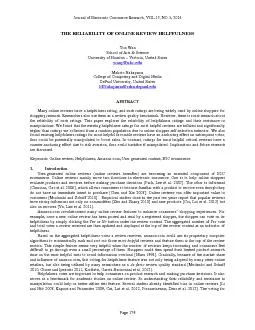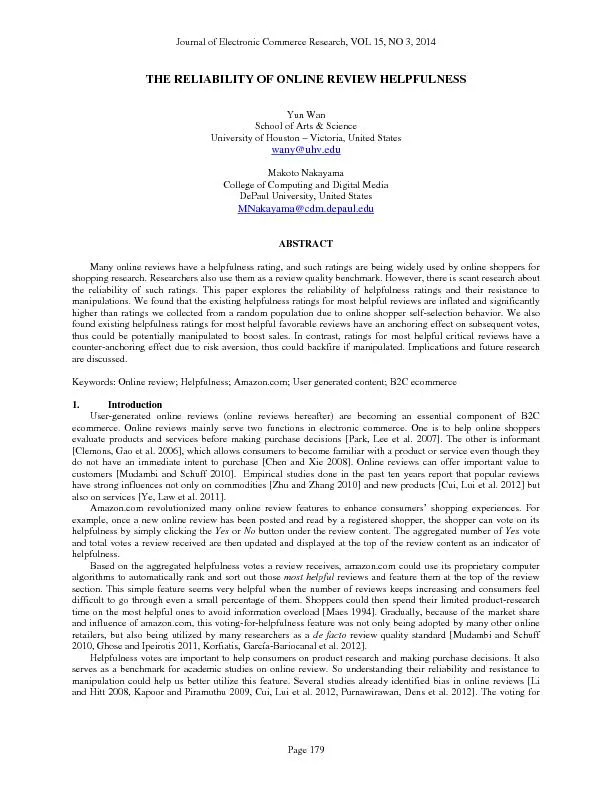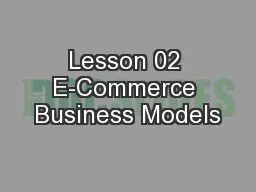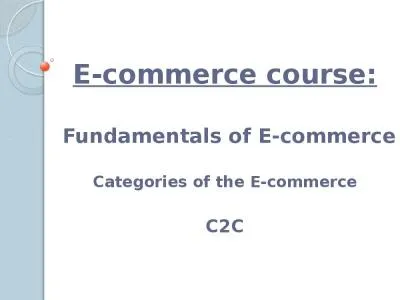PDF-Journal of Electronic Commerce Research VOL NO
Author : olivia-moreira | Published Date : 2014-11-15
1 2007 ONLINE SHOPPING ACCEPTANCE MODEL A CRITICAL SURVEY OF CONSUMER FACTORS IN ONLINE SHOPPING Lina Zhou Department of Information Systems Univ ersity of Maryland
Presentation Embed Code
Download Presentation
Download Presentation The PPT/PDF document "Journal of Electronic Commerce Research ..." is the property of its rightful owner. Permission is granted to download and print the materials on this website for personal, non-commercial use only, and to display it on your personal computer provided you do not modify the materials and that you retain all copyright notices contained in the materials. By downloading content from our website, you accept the terms of this agreement.
Journal of Electronic Commerce Research VOL NO: Transcript
Download Document
Here is the link to download the presentation.
"Journal of Electronic Commerce Research VOL NO"The content belongs to its owner. You may download and print it for personal use, without modification, and keep all copyright notices. By downloading, you agree to these terms.
Related Documents

